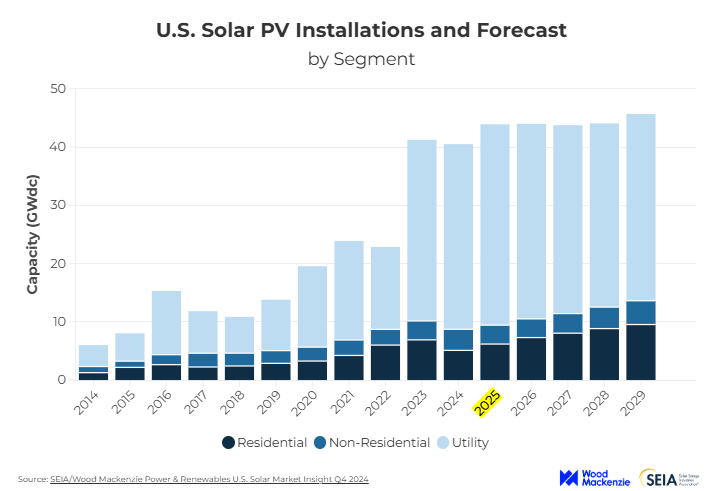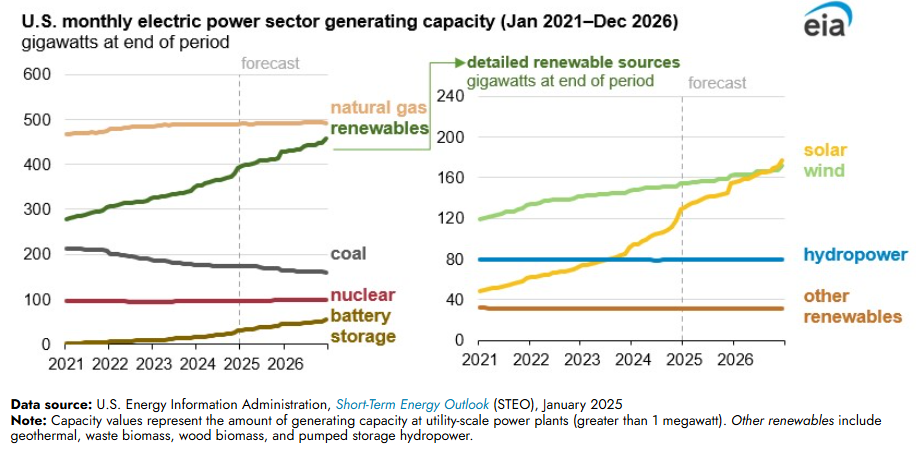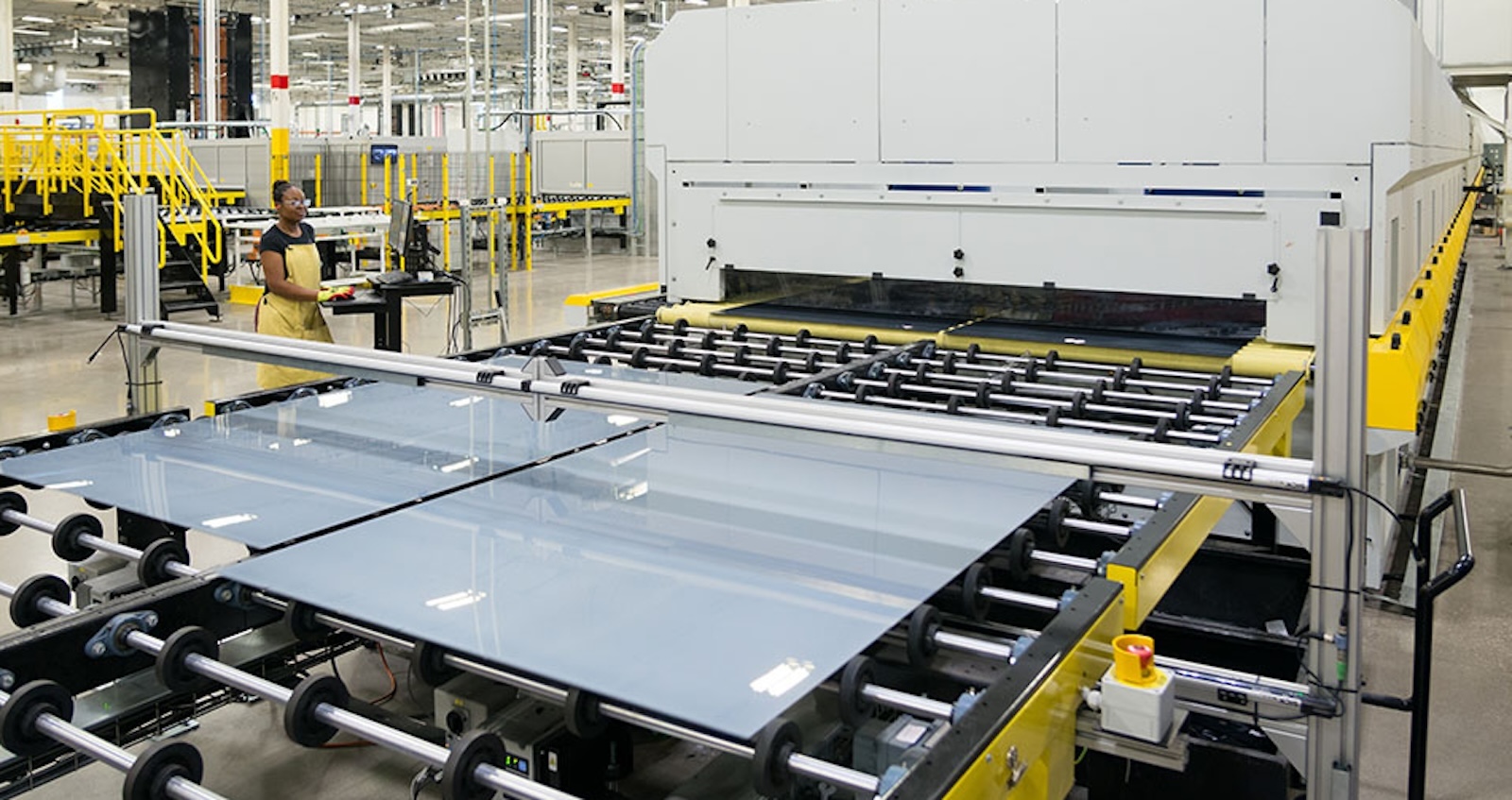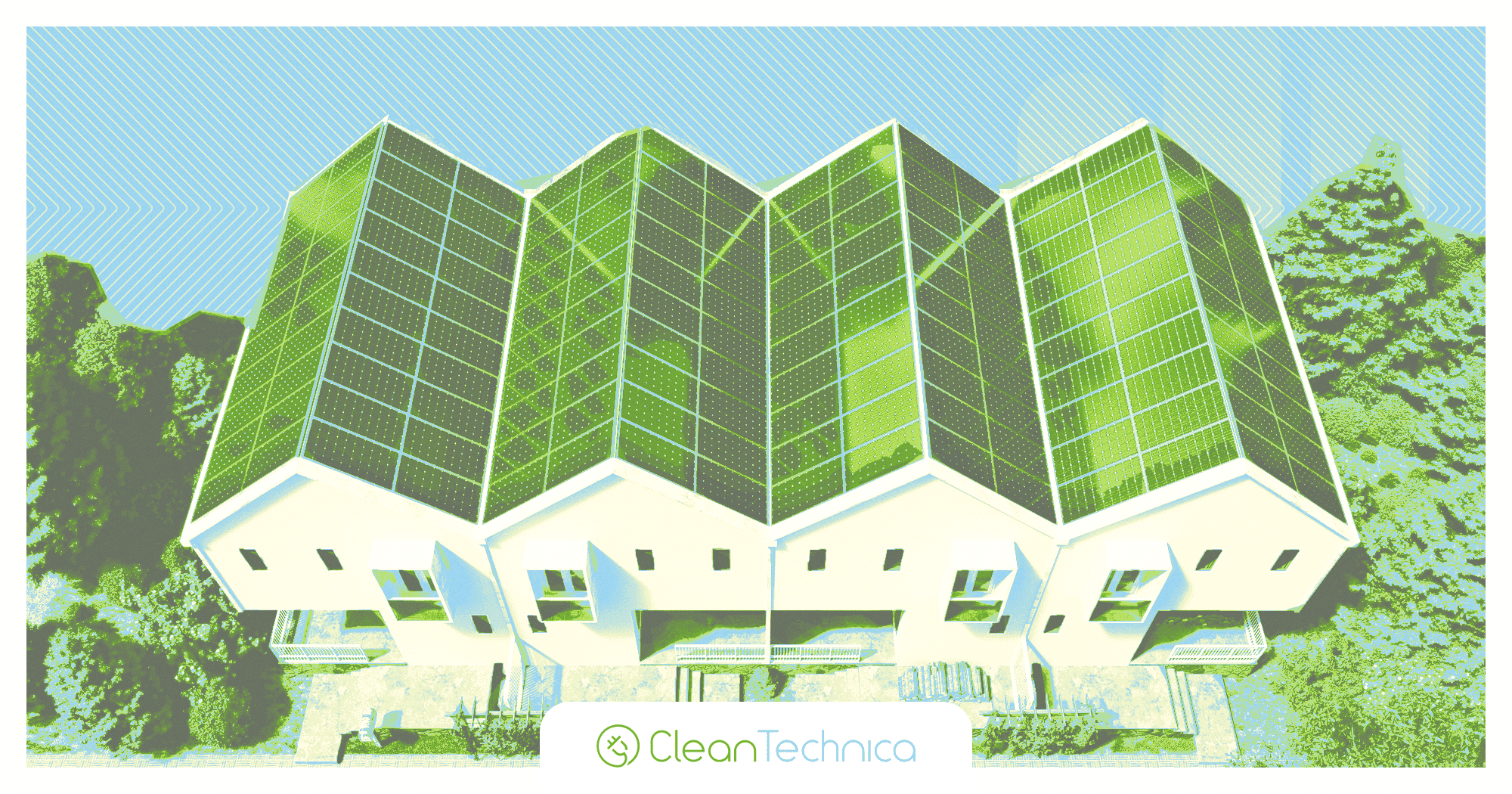US adds 34 GW of PV capacity in 2024
After a record 37 GW of new solar added in 2024, the US Energy Information Administration (EIA) said it expects 26 GW in 2025, and even less in 2026.

After a record 37 GW of new solar added in 2024, the US Energy Information Administration (EIA) said it expects 26 GW in 2025, and even less in 2026.
From pv magazine USA
Solar has grown rapidly in the United States and abroad, expanding from 0.1% of US electricity generation in 2010 to over 6% today, according to the Solar Energy Industries Association (SEIA).
Growth continued through 2024, as the United States installed 37 GW of new solar capacity. However, the EIA said that this growth may retract in 2025.
In its “Short-Term Energy Outlook” report, the EIA said that the country will install 26 GW in 2025, falling roughly 30% from the record year in 2024. The EIA also claimed that the United States will only install 22 GW in 2026, potentially indicating a shrinking industry after 15 years of double-digit growth.
The forecast from EIA diverges significantly from expectations by Wood Mackenzie and SEIA. The two groups said the United States will install at least 43 GW in 2025 onward, reaching nearly 450 GW of cumulative installations by the end of 2029.

Despite the anticipated slowdown in installations, the EIA said it expects solar to be the leading contributor of new generation added to the grid over the next two years. And despite lower annual capacity additions, these forecasts would represent an increase of US solar generation by 34% in 2025 and by 17% in 2026.
The EIA also said wind capacity additions will increase by around 8 GW in 2025 and 9 GW in 2026, slight increases from the 7 GW added in 2024. Based on current capacities and expected growth rates, the EIA said solar capacity will overtake wind capacity in the United State in 2027, as seen in the chart below.

The EIA also said that rising generation from total renewables will cause natural gas generation to decline by 3% in 2025 and by another 1% in 2026. It added that coal generation will fall by 1% in 2025, while increasing slightly in 2026 due to expected increases in natural gas costs, maintaining price competitiveness for coal-fired power.
After almost two decades of relatively little change, consumption of electricity grew by 2% in the United States in 2024. The EIA said it expects electricity consumption to annually increase by about 2% over the next two years.
What's Your Reaction?






























































